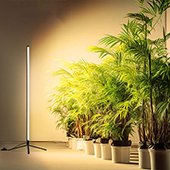เมนู
ผักและผลไม้ที่ดีที่สุดที่จะปลูกในเต็นท์ปลูกขนาดเล็ก
คุณเคยคิดที่จะมีสวนผลไม้เคลื่อนที่และสวนผักขนาดเล็ก แม้จะอยู่ท่ามกลางป่าในเมืองสำหรับผู้ที่ชื่นชอบการทำสวนหรือไม่?
วันนี้เราจะมาพูดถึงอุปกรณ์สุดสนุกและใช้งานได้จริงนี้ – เต็นท์เล็กๆ แต่อย่าเข้าใจผิด เราไม่ได้หมายถึงเต็นท์ตั้งแคมป์ที่คุณแบกไว้สำหรับการผจญภัยกลางแจ้ง
แต่เรากำลังพูดถึงพื้นที่ปลูกต้นไม้ขนาดเล็กที่ออกแบบมาสำหรับผู้ชื่นชอบการทำสวนในร่มโดยเฉพาะ เปรียบเสมือนเรือนกระจกขนาดเล็กที่ให้คุณเพลิดเพลินกับการทำสวนในพื้นที่จำกัดและเก็บเกี่ยวผักผลไม้สดได้มากมาย
สิ่งที่คุณต้องมีก็แค่หามุมในบ้านและตั้งเต็นท์เล็กๆ เท่านี้ คุณก็สามารถเริ่มสร้างสวรรค์สีเขียวของคุณได้
ทุกคนคงอยากรู้ว่าผักและผลไม้ชนิดใดที่เหมาะกับการปลูกในเต็นท์ปลูกขนาดเล็กมีอะไรบ้าง?
มาเริ่มต้นการเดินทางสำรวจอันน่ารื่นรมย์ของการเป็นเกษตรกรรายย่อยด้วยกัน! จดผักและผลไม้นานาพันธุ์ที่ควรค่าแก่การลองใช้และอุปกรณ์ที่จำเป็น ฉันเชื่อว่าในไม่ช้า คุณจะสามารถเก็บเกี่ยวความประหลาดใจและความอร่อยมากมายในเต็นท์เล็กๆ ของคุณ
สารบัญ
ผลไม้ที่ดีที่สุดสำหรับเต็นท์ขนาดเล็ก
ในสภาพแวดล้อมการปลูกพืชอันเป็นเอกลักษณ์แบบเต็นท์ขนาดเล็ก การเลือกพันธุ์ผลไม้ที่เหมาะสมถือเป็นสิ่งสำคัญ ต่อไปนี้คือผลไม้ 5 ชนิดขึ้นไปที่เราคัดสรรมาอย่างดี ซึ่งไม่เพียงแต่ปรับให้เข้ากับสภาพเต็นท์ได้ดี แต่ยังจัดการง่ายและให้ผลผลิตสูงอีกด้วย
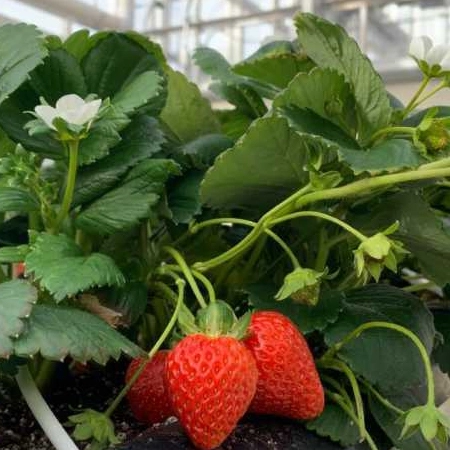
สตรอเบอร์รี่
สตรอเบอร์รี่ถือเป็นมะเฟืองสำหรับการเพาะปลูกในเต็นท์ขนาดเล็ก เนื่องจากสตรอเบอร์รี่สามารถปรับตัวได้ดีกับสภาพแสง อุณหภูมิ และความชื้นที่แตกต่างกัน ด้วยขนาดที่กะทัดรัด ต้นสตรอเบอร์รี่จึงเหมาะอย่างยิ่งสำหรับการเพาะปลูกในพื้นที่จำกัด
การเก็บเกี่ยวอย่างต่อเนื่อง: สตรอเบอร์รี่มีลักษณะหลายรอบการออกดอกและติดผล คุณสามารถเก็บเกี่ยวได้อย่างต่อเนื่องตั้งแต่ต้นฤดูใบไม้ผลิถึงต้นฤดูร้อน เพื่อให้มั่นใจว่าเต็นท์ของคุณจะมีผลไม้สดอยู่สม่ำเสมอ
เคล็ดลับการปลูก: เลือกดินหรือดินปลูกพืชไฮโดรโปนิกส์ที่ระบายน้ำได้ดี ให้ความชุ่มชื้นปานกลาง และใส่ปุ๋ยอินทรีย์ในปริมาณที่เหมาะสมเป็นประจำ ตัดดอกไม้และผลไม้เป็นประจำเพื่อหลีกเลี่ยงการบริโภคสารอาหารมากเกินไป ใส่ใจกับการควบคุมสัตว์รบกวนทั่วไป เช่น ไรเดอร์และเพลี้ยอ่อน
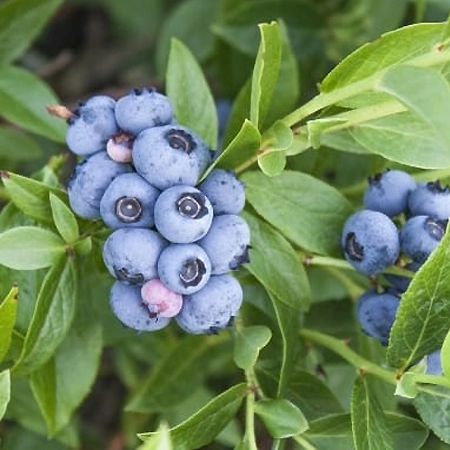
บลูเบอร์รี่
เลือกใช้บลูเบอร์รี่พันธุ์แคระหรือกึ่งแคระที่เหมาะกับพื้นที่ที่มีความสูงจำกัดภายในเต็นท์ขนาดเล็ก
ข้อกำหนดของดินที่เป็นกรดt: แม้ว่าบลูเบอร์รี่จะมีข้อกำหนดความเป็นกรดของดินโดยเฉพาะ (pH ระหว่าง 4.0-5.5) แต่สภาวะนี้สามารถแก้ไขได้ภายในเต็นท์โดยใช้สื่อปลูกบลูเบอร์รี่แบบพิเศษหรือระบบไฮโดรโพนิก
แสงและอุณหภูมิ: บลูเบอร์รี่เจริญเติบโตได้ดีในแสงแดดที่เพียงพอ ดังนั้นควรได้รับแสงที่เพียงพอและอุณหภูมิที่เหมาะสม (15-25°C) ภายในเต็นท์ การให้ความเย็นปานกลางในช่วงฤดูหนาวจะช่วยลดการพักตัวและส่งเสริมการออกดอกในฤดูใบไม้ผลิ

มะเขือเทศ
เลือกใช้มะเขือเทศพันธุ์แคระหรือมะเขือเทศแขวน เช่น มะเขือเทศเชอรี่ ซึ่งปรับให้เข้ากับพื้นที่ภายในเต็นท์ที่จำกัดได้ดี
แสงและอุณหภูมิ: มะเขือเทศต้องการแสงแดดที่เพียงพอ ดังนั้นต้องแน่ใจว่ามีแสงสว่างเพียงพอภายในเต็นท์และรักษาอุณหภูมิไว้ระหว่าง 18-28°C เพื่อหลีกเลี่ยงผลกระทบที่ไม่พึงประสงค์ต่อผลไม้จากอุณหภูมิต่ำในเวลากลางคืน
การสนับสนุนและการตัดแต่งกิ่ง: ติดตั้งโครงสร้างรองรับหรือแขวนเชือกเพื่อนำการเจริญเติบโตของพืชขึ้นไป และตัดแต่งกิ่งอย่างสม่ำเสมอโดยนำยอดด้านข้างออกและให้สารอาหารแก่ลำต้นและผลไม้เป็นหลัก
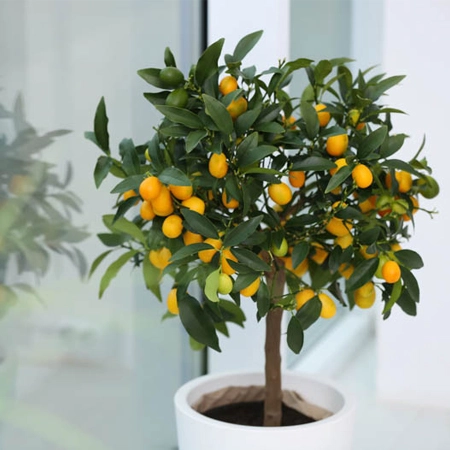
กัมควอต
ต้นคัมควอตเป็นทั้งไม้ประดับและกินได้ ทำให้เป็นทางเลือกที่ดีสำหรับการตกแต่งและบริโภคในเต็นท์ขนาดเล็ก
แสงและอุณหภูมิ: ส้มจี๊ดชอบแสงแดดจัดและอากาศที่อบอุ่นและชื้น ตรวจสอบให้แน่ใจว่ามีแสงสว่างเพียงพอภายในเต็นท์และรักษาอุณหภูมิให้สูงกว่า 5°C ในช่วงฤดูหนาวเพื่อหลีกเลี่ยงความเสียหายจากน้ำค้างแข็ง
การตัดแต่งกิ่งและการปฏิสนธิ: การตัดแต่งกิ่งสม่ำเสมอเป็นสิ่งจำเป็นเพื่อรักษารูปร่างของต้นไม้ กระตุ้นการเจริญเติบโตของกิ่งก้านด้านข้าง และเพิ่มผลผลิต ใช้ปุ๋ยที่สมดุลอย่างสม่ำเสมอเพื่อให้แน่ใจว่ามีสารอาหารเพียงพอ
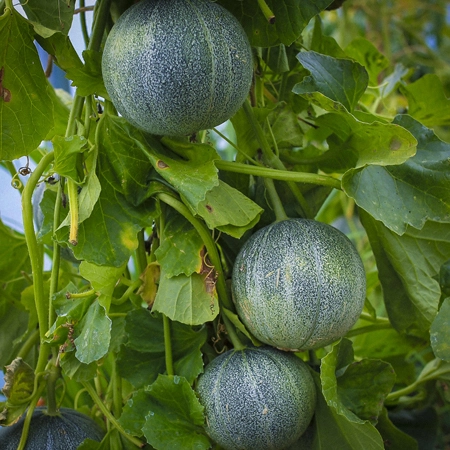
แตงโม
เลือกพันธุ์เมล่อนแคระหรือลูกเล็กให้เหมาะสมกับพื้นที่ภายในเต็นท์ที่จำกัด
แสงและอุณหภูมิ: แตงชอบสภาพแวดล้อมที่อบอุ่นและมีแสงสว่างเพียงพอ ตรวจสอบให้แน่ใจว่ามีแสงสว่างเพียงพอภายในเต็นท์และรักษาอุณหภูมิให้อยู่ระหว่าง 20-30°C การลดอุณหภูมิในเวลากลางคืนจะส่งผลดีต่อการสะสมน้ำตาล
การสนับสนุนและการตัดแต่งกิ่ง: ติดตั้งโครงสร้างรองรับหรือแขวนเชือกเพื่อเป็นแนวทางในการเจริญเติบโตของเถาวัลย์ ตัดแต่งกิ่งอย่างสม่ำเสมอโดยประดับเถาหลัก และรักษาเถาวัลย์ด้านข้างที่แข็งแรงไว้ ให้ความสนใจกับการควบคุมศัตรูพืชและโรคต่างๆ เช่น เพลี้ยอ่อนและโรคราแป้ง
ผักที่ดีที่สุดสำหรับเต็นท์ขนาดเล็ก
ผักส่วนใหญ่ทำงานได้ดีภายใต้สภาพเต็นท์ที่กำลังเติบโต ฉันรู้ว่ามะเขือเทศและพริก (รวมถึงสมุนไพรส่วนใหญ่ เช่น ใบโหระพา ผักชี กุ้ยช่าย ฯลฯ) มีความต้องการแสง/ความร้อนคล้ายกับกัญชา ดังนั้นคุณจึงสามารถลองปฏิบัติตามแนวทางของกัญชาในเรื่องแสง ความร้อน และความชื้นได้
ผักกาดหอมและผักโขมมีแนวโน้มที่จะหว่านที่อุณหภูมิสูงกว่า 70°F ดังนั้น โปรดจำไว้เสมอ แต่ถ้าคุณไม่ทำให้บ้านของคุณร้อนจัดหรือมีเครื่องทำความร้อนในเต็นท์ ก็ไม่น่าเป็นไปได้ที่เต็นท์ปลูกจะอบอุ่นขนาดนั้น
ผักโขม
การเติบโตอย่างรวดเร็ว: ผักโขมโตเร็ว ใบอ่อนพร้อมเก็บเกี่ยวหลังหยอดเมล็ดประมาณ 4-6 สัปดาห์ ทำให้เหมาะกับการปลูกหลายรอบภายในระบบเต็นท์ขนาดเล็ก
แสงสว่าง & อุณหภูมิ: ผักโขมมีความต้องการแสงน้อยและสามารถเจริญเติบโตได้ในสภาพแวดล้อมที่มีร่มเงาบางส่วน รักษาอุณหภูมิระหว่าง 15-25°C เพื่อป้องกันไม่ให้ใบแก่เนื่องจากความร้อนมากเกินไป
ผักกาดหอม
ทางเลือกที่หลากหลาย: ผักกาดหอมมีหลากหลายพันธุ์ เช่น ผักกาดโรเมน บัตเตอร์เฮด และผักกาดใบแดง ให้เลือกตามความชอบส่วนตัว แสงสว่าง & อุณหภูมิ: ผักกาดหอมชอบอากาศที่เย็นและชื้น ภายในเต็นท์ ให้แน่ใจว่าได้รับแสงปานกลาง หลีกเลี่ยงแสงแดดจ้าโดยตรงในช่วงฤดูร้อน และรักษาอุณหภูมิไว้ที่ 15-20°C
โหระพา
ราชาแห่งสมุนไพร: ใบโหระพามีกลิ่นหอมแรงและโดดเด่น ทำให้เป็นวัตถุดิบหลักในการทำอาหารและเป็นสมุนไพรที่เหมาะสำหรับการเพาะปลูกในเต๊นท์ขนาดเล็ก
แสงสว่าง & อุณหภูมิ: ใบโหระพาเจริญเติบโตในสภาพแวดล้อมที่อบอุ่นและมีแสงแดดจ้า โดยต้องการแสงสว่างเพียงพอภายในเต็นท์และรักษาอุณหภูมิไว้ระหว่าง 20-30°C การดูแลฤดูหนาวควรรวมถึงการป้องกันจากความหนาวเย็น
กุ้ยช่าย
การใช้พื้นที่สูง: ด้วยขนาดที่กะทัดรัด กุ้ยช่ายสามารถใช้เป็นพืชชายแดนหรือปลูกร่วมกับผักชนิดอื่นได้ เพื่อเพิ่มพื้นที่ทุกตารางนิ้วภายในเต็นท์ปลูก แสงสว่าง & อุณหภูมิ: กุ้ยช่ายต้องการแสงน้อยและสามารถทนต่อช่วงอุณหภูมิที่กว้าง (10-25°C) ทำให้ง่ายต่อการจัดการภายในสภาพแวดล้อมเต็นท์
หัวไชเท้า
การเก็บเกี่ยวอย่างรวดเร็ว: หัวไชเท้าจัดอยู่ในกลุ่มผักรากที่โตเร็วที่สุด โดยมีระยะเวลาตั้งแต่หว่านจนถึงเก็บเกี่ยวเพียง 20-30 วัน ทำให้เหมาะอย่างยิ่งสำหรับการหมุนเวียนอย่างรวดเร็วภายในเต็นท์ขนาดเล็ก
แสงสว่าง & อุณหภูมิ: หัวไชเท้าชอบอากาศเย็น ภายในเต็นท์ ต้องแน่ใจว่าได้รับแสงเพียงพอและรักษาอุณหภูมิไว้ระหว่าง 15-20°C เพื่อป้องกันการพัฒนาพื้นผิวไม้ในรากที่กินได้เนื่องจากมีความร้อนมากเกินไป
สิ่งจำเป็นสำหรับเต็นท์ขนาดเล็ก
เพื่อให้ได้ผักและผลไม้ที่อร่อยที่สุด คุณจะต้องมีอุปกรณ์บางอย่าง เพียงไม่กี่รายการที่สำคัญจะเปลี่ยนเต็นท์ขนาดเล็กของคุณ!
แสงเป็นสิ่งที่ต้องมี: ไฟ LED เติบโตดีที่สุดสำหรับพื้นที่ขนาดเล็ก
ไฟ LED เติบโตด้วยคุณสมบัติประหยัดพลังงานและให้ความร้อนต่ำ จึงเป็นโซลูชันแสงสว่างในอุดมคติสำหรับเต็นท์ปลูกขนาดเล็ก ต่างจากแหล่งกำเนิดแสงแบบเดิมๆ ตรงที่ไม่สร้างความร้อนมากเกินไป ซึ่งช่วยลดผลกระทบจากอุณหภูมิที่ไม่พึงประสงค์ภายในพื้นที่จำกัด
แม้จะมีข้อจำกัดด้านพื้นที่ แต่ไฟ LED ยังคงให้รังสีที่ทำการสังเคราะห์แสงได้เพียงพอ ตอบสนองความต้องการในการสังเคราะห์แสงของพืชต่างๆ และส่งเสริมการเจริญเติบโตที่ดี เลือกใช้หลอดไฟ LED แบบเต็มสเปกตรัมเพื่อให้แน่ใจว่าแสงสีแดงและสีน้ำเงินมีความสมดุลที่เหมาะสม ซึ่งปรับให้เหมาะกับความต้องการสเปกตรัมของพืชต่างๆ ในระยะการเจริญเติบโตต่างๆ
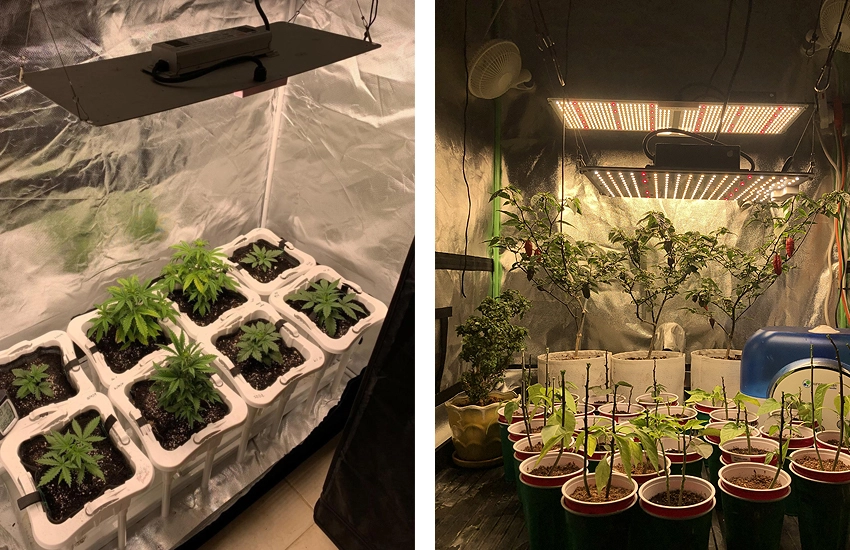
ต้องหายใจ: แม้แต่พัดลมขนาดเล็กก็สามารถทำให้อากาศเคลื่อนที่ได้
ในเต็นท์ขนาดเล็ก การระบายอากาศที่เหมาะสมถือเป็นสิ่งสำคัญในการป้องกันการเจริญเติบโตของเชื้อราและแมลงรบกวน แม้แต่พัดลมขนาดเล็กธรรมดาก็สามารถส่งเสริมการไหลเวียนของอากาศได้อย่างมีประสิทธิภาพ ทำให้มั่นใจว่ามีออกซิเจนเพียงพอภายในเต็นท์ ในขณะเดียวกันก็ช่วยไล่ความชื้นและก๊าซที่เป็นอันตราย
เมื่อติดตั้งพัดลม ต้องแน่ใจว่าพัดลมครอบคลุมพื้นที่การเพาะปลูกทั้งหมดโดยไม่สร้างจุดบอดของการไหลของอากาศ ใช้งานโดยใช้ตัวจับเวลาหรือควบคุมเซ็นเซอร์ความชื้นเพื่อรักษาความชื้นและอุณหภูมิในอากาศให้เหมาะสม
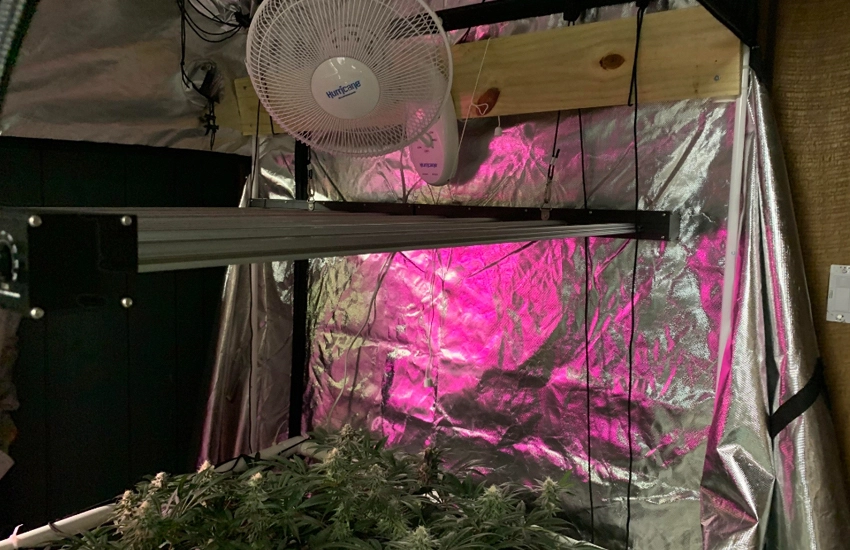
ขนาดหม้อก็สำคัญ!
กระถางผ้า (หรือที่เรียกว่า หม้ออัจฉริยะหรือถุงควบคุมราก) ช่วยให้รากหายใจได้อย่างอิสระ เพิ่มการไหลเวียนของอากาศ และลดการสะสมของน้ำ ซึ่งช่วยป้องกันโรคของราก ลักษณะน้ำหนักเบาและพับได้ยังเหมาะอย่างยิ่งสำหรับพื้นที่จำกัดของเต็นท์ปลูกขนาดเล็ก
บรอกโคลีและพริกจะต้องใช้กระถางที่ค่อนข้างใหญ่เมื่อโตเต็มที่ โดยควรให้พริกฮาลาเปโน่อย่างน้อยหนึ่งแกลลอน ในขณะที่บรอกโคลีอาจต้องใช้ 3 ถึง 5 แกลลอน
ให้อาหารพืชของคุณ: แสวงหาดินคุณภาพและสารอาหารที่ออกแบบมาสำหรับภาชนะบรรจุ
เลือกดินคุณภาพเยี่ยมสูตรเฉพาะสำหรับการจัดสวนในภาชนะ ซึ่งโดยทั่วไปจะมีการระบายน้ำที่ดีเยี่ยม การกักเก็บน้ำที่เหมาะสม และปริมาณอินทรียวัตถุที่อุดมสมบูรณ์ ช่วยให้พืชได้รับสารอาหารที่จำเป็นสำหรับการเจริญเติบโตในช่วงแรก
เมื่อพืชเติบโตเต็มที่และก้าวหน้าไปตามวงจรการเจริญเติบโต ให้ใช้อาหารพืชเหลวหรือปุ๋ยที่ละลายช้าในปริมาณที่เหมาะสมเป็นประจำ เติมองค์ประกอบที่จำเป็น เช่น ไนโตรเจน ฟอสฟอรัส โพแทสเซียม และแร่ธาตุรองเพื่อให้แน่ใจว่ามีการเจริญเติบโตที่ดีอย่างยั่งยืน เพิ่มผลผลิต และคุณภาพที่เหนือกว่า
ความคิดสุดท้าย
ไม่ต้องเลือกผักจืดชืดไร้ชีวิตจากชั้นวางซุปเปอร์มาร์เก็ตอีกต่อไป โอบรับพลังของการเป็นเจ้าของเต็นท์เพื่อเติมความสดชื่นให้กับโต๊ะของคุณ! ดูแลส่วนผสมของคุณ’ และไม่ปฏิเสธความพึงพอใจที่ไม่มีใครเทียบได้จากการบำรุงเลี้ยงพืชตั้งแต่เมล็ดจนถึงการเก็บเกี่ยว
เริ่มต้นง่ายๆ กล้าสร้างสรรค์สิ่งใหม่ๆ ในขณะที่คุณก้าวไป โดยให้ความสำคัญกับกระบวนการแต่เนิ่นๆ เพราะเสน่ห์ของการเดินทางทำสวนไม่ใช่แค่การไปถึงจุดหมายเท่านั้น แต่ยังรวมถึงการสำรวจและประสบการณ์ตลอดเส้นทางด้วย
คุณอยากที่จะเจาะลึกลงไปในความกล้าหาญด้านพืชสวนของคุณหรือไม่? ความสุขในการทำสวนเกิดจากการทดลองที่กล้าหาญและความกระตือรือร้นที่จะแบ่งปัน ไม่ว่าคุณจะเผชิญกับความสับสนหรือได้รับข้อมูลเชิงลึกอันมีค่าในความพยายามในการปลูกพืชของคุณ เรารอคอยอย่างใจจดใจจ่อที่จะมีส่วนร่วมในการสนทนาและแบ่งปันความสุขและภูมิปัญญาในการทำสวนกับคุณ
ติดต่อกับพวกเรา!
ตั้งแต่การวางแผนไฟแบบกำหนดเอง ไปจนถึงการเสนอราคาที่ปรับให้เหมาะสม และทุกสิ่งในระหว่างนั้น ทีมผู้เชี่ยวชาญด้านพืชสวนของเราพร้อมให้ความช่วยเหลือเสมอ

